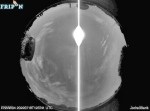This gallery contains 5 photos.
The Apollo 15 mission landed astronauts Dave Scott and Jim Irvine onto the surface of the Moon on the 30th July 1971. The mission visited an area on the nearside of the Moon, to the SW corner of the Imbrium … Continue reading







